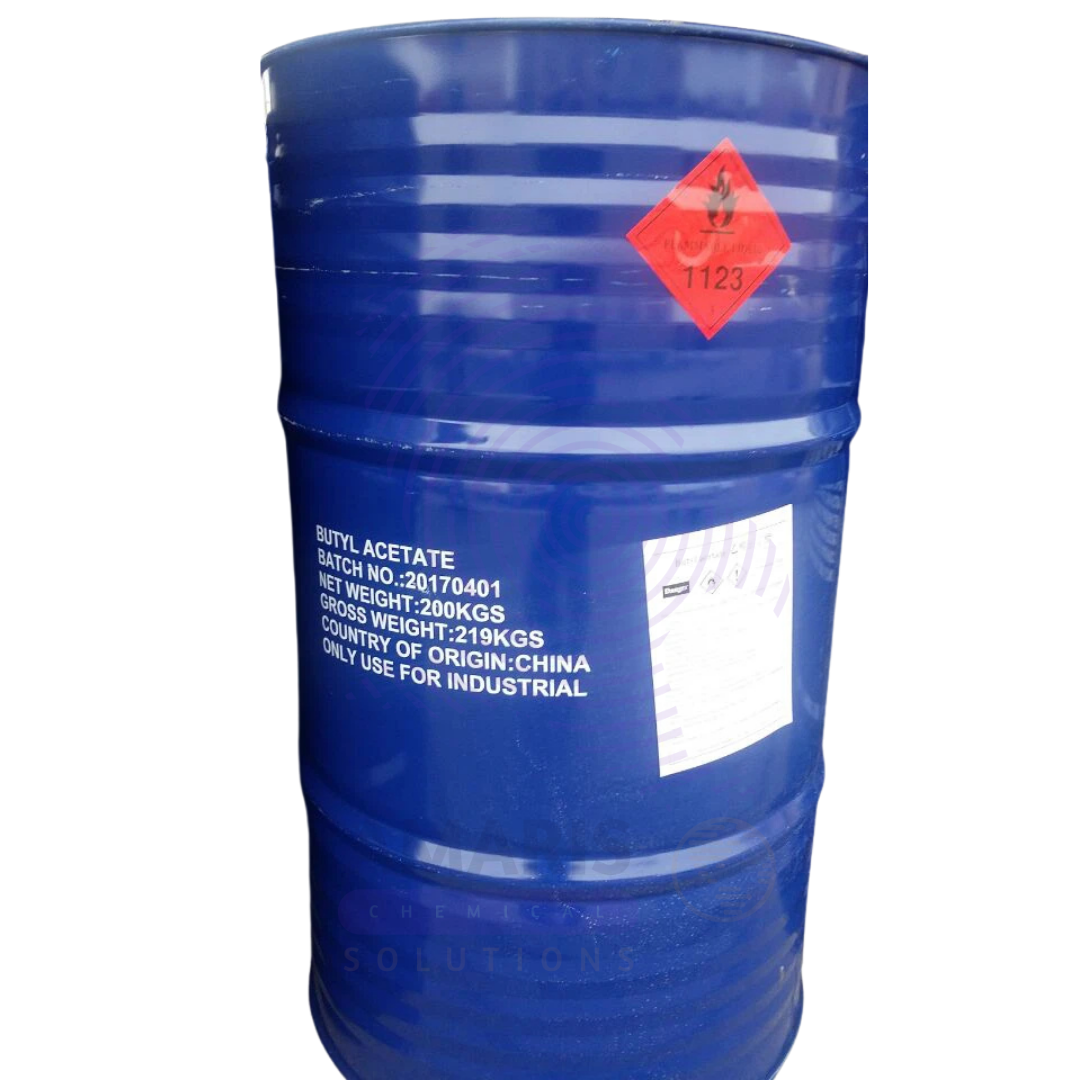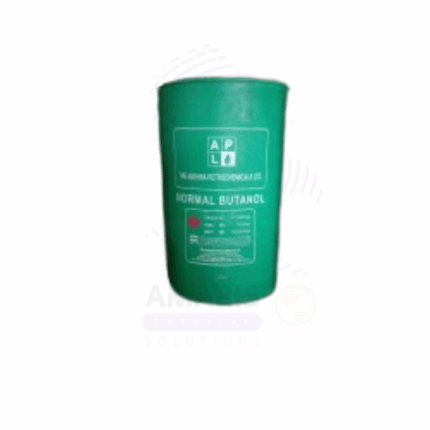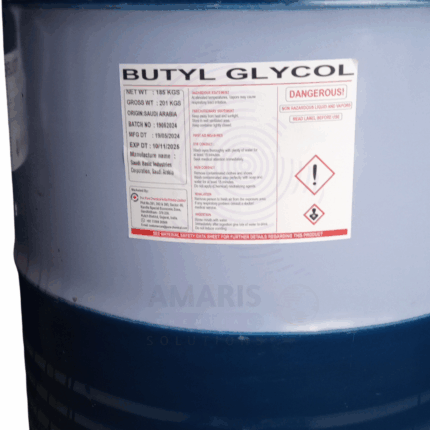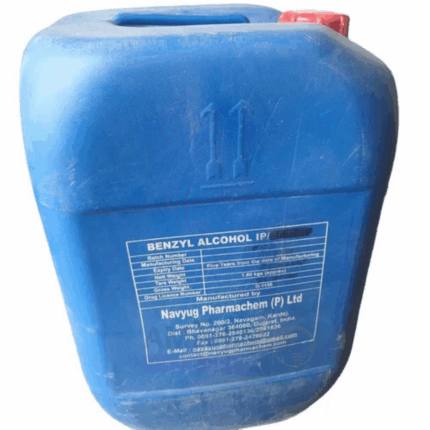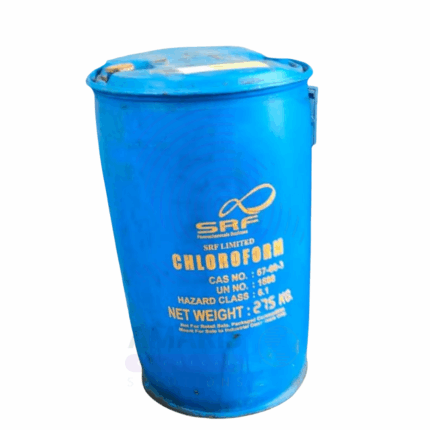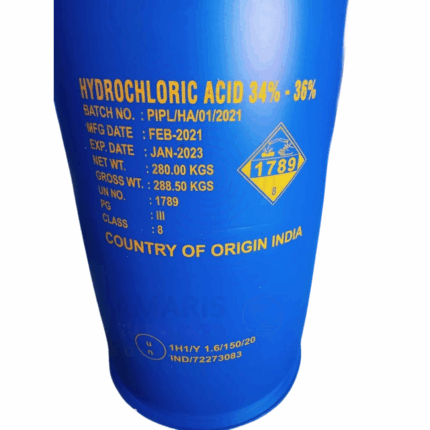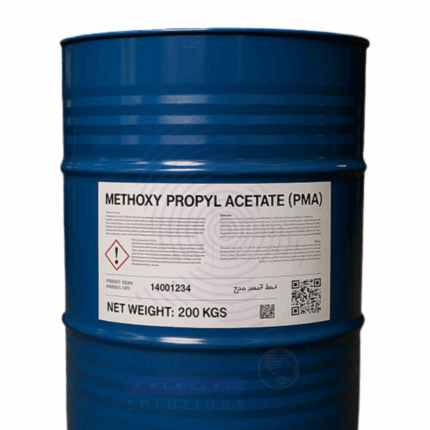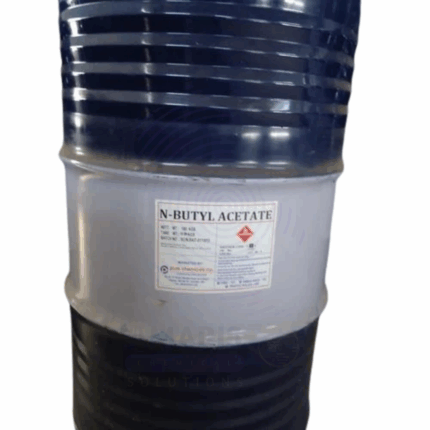“Hexane” has been added to your cart. View cart
Butyl Acetate
Whatsapp Order
Butyl Acetate is a clear, colorless liquid with a characteristic pleasant fruity odor similar to pears or bananas. It is an ester formed from butanol and acetic acid. Due to its excellent solvent properties, moderate evaporation rate, and relatively low toxicity, it is widely used in industrial, pharmaceutical, food flavoring, and cosmetic applications. It dissolves many resins and polymers and is prized for improving flow and finish in coatings and inks.
Description
Table of Contents
Toggle
Butyl Acetate
Primary Uses
- Industrial Solvent
- Used extensively as a solvent in paints, varnishes, lacquers, and coatings to improve drying time, film formation, and gloss.
- Common solvent in printing inks and adhesives to enhance viscosity and application properties.
- Chemical Intermediate
- Employed as an intermediate in organic synthesis and flavor/fragrance manufacture.
- Food & Fragrance Industry
- Utilized as a flavoring agent and fragrance solvent due to its fruity aroma.
- Acts as a solvent for natural extracts and flavor concentrates.
- Pharmaceuticals
- Functions as a solvent or excipient in pharmaceutical coatings, sprays, and topical formulations.
Secondary Uses
- Cleaning Agents
- Incorporated in degreasers and cleaning formulations for industrial and household use.
- Automotive Industry
- Used in automotive paints and refinishing products.
- Textile Industry
- Applied as a solvent during dyeing and finishing processes.
- Laboratory Uses
- Serves as a solvent in chemical laboratories for various analytical and synthetic procedures.
PRODUCT KEY FEATURES
. Basic Identification Attributes
- Chemical Name (IUPAC): Butyl acetate
- Common/Trade Names: Butyl Acetate, n-Butyl Acetate, Butyl Ethanoate
- CAS Number: 123-86-4
- HS Code: 2915.13.00
- Molecular Formula: C6H12O2
- Molecular Weight: 116.16 g/mol
- Synonyms:
- Butyl ethanoate
- n-Butyl acetate
- Acetic acid butyl ester
- Butyl ester of acetic acid
2. Physical & Chemical Properties
- Physical State: Clear, colorless liquid
- Odor: Pleasant fruity (pear/banana-like) odor
- Boiling Point: 126 °C
- Melting Point: -78 °C
- Density: 0.88 g/cm³ at 20 °C
- Flash Point: 26 °C (closed cup)
- Solubility: Slightly soluble in water (~7 g/L at 20 °C); miscible with many organic solvents
- Vapor Pressure: 11.5 kPa at 20 °C
- Refractive Index: 1.397
3. Safety & Hazard Attributes
- Hazard Class (GHS): Flammable Liquid, Category 3
- NFPA Ratings:
- Health: 1
- Flammability: 3
- Reactivity: 0
- Exposure Limits:
- OSHA PEL: General solvent limits apply; no specific limit for butyl acetate
- ACGIH TLV: 150 ppm (TWA)
- Toxicity: Low acute toxicity; can cause irritation to eyes, skin, and respiratory tract
- Reactivity: Stable under normal conditions; incompatible with strong oxidizers
4. Storage & Handling Attributes
- Storage Conditions: Store in cool, well-ventilated area away from ignition sources
- Container Type: Airtight metal or chemically resistant plastic containers
- Shelf Life: 2–3 years under proper storage conditions
- Special Handling: Use grounding and bonding to prevent static discharge; avoid inhaling vapors
5. Regulatory & Compliance Attributes
- Regulatory Status: Listed in REACH, TSCA, and other chemical inventories
- Transportation: Classified as flammable liquid under DOT, IMDG, and IATA regulations
- Waste Disposal: Dispose of in accordance with local hazardous waste regulations
6. Environmental & Health Impact
- Ecotoxicity: Harmful to aquatic life with long-lasting effects
- Persistence: Readily biodegradable
- Bioaccumulation: Low potential
- Carcinogenicity/Mutagenicity: Not classified as carcinogenic or mutagenic
SAFETY HANDLING PRECAUTIONS
Personal Protective Equipment (PPE):
- Chemical-resistant gloves
- Safety goggles or face shield
- Protective clothing (lab coat, apron)
- Respiratory protection if ventilation is inadequate
Handling Measures:
- Avoid breathing vapors
- Ground and bond containers to prevent static discharge
- Use explosion-proof equipment and adequate ventilation
Storage Measures:
- Keep containers tightly closed
- Store away from heat, sparks, and incompatible materials
Hygiene Practices:
- Wash hands thoroughly after handling
- Avoid eating, drinking, or smoking in the handling area
First Aid Measures
- Inhalation: Move to fresh air; seek medical attention if symptoms persist
- Skin Contact: Wash with soap and water; remove contaminated clothing
- Eye Contact: Rinse thoroughly with water for at least 15 minutes; seek medical attention if irritation continues
- Ingestion: Rinse mouth; do not induce vomiting; seek immediate medical help
Firefighting Measures
- Fire Hazards: Highly flammable liquid and vapor; vapors may form explosive mixtures with air
- Extinguishing Media: Dry chemical powder, alcohol-resistant foam, CO₂, or water spray
- Special Precautions: Firefighters should wear full protective gear and self-contained breathing apparatus (SCBA)
- Decomposition Products: May produce carbon monoxide, carbon dioxide, and irritating fumes under fire conditions
Related products
Baso Soft
Baso Soft is a specialized fabric softener designed to impart softness, freshness, and ease of ironing to laundered textiles. It is formulated with cationic surfactants and conditioning agents that reduce static cling, enhance fabric texture, and leave a pleasant fragrance on clothes. Baso Soft is suitable for use in both household and commercial laundry processes, improving the feel and longevity of various fabric types such as cotton, synthetics, and blends. Its formulation also helps reduce wrinkles and improve fabric manageability after washing.
Benzyl Alcohol
Benzyl Alcohol is an aromatic alcohol with a mild pleasant odor and clear, colorless liquid appearance. It serves as a versatile solvent, preservative, and intermediate in chemical synthesis. Benzyl Alcohol is widely used across pharmaceuticals, cosmetics, paints, coatings, and as a bacteriostatic agent in injectable drugs. Its relatively low toxicity and good solvent properties make it valuable in both industrial and consumer products.
Chloroform
Chloroform (Trichloromethane) is a clear, colorless, volatile liquid with a sweet, pleasant odor. It is a widely used organic solvent with excellent solvency for many substances. Historically employed as an anesthetic, chloroform is now primarily used in laboratories and industry for extraction, degreasing, and chemical synthesis. It has moderate volatility and is heavier than air, requiring careful handling to avoid inhalation hazards. Its chemical stability and ability to dissolve fats, alkaloids, and other substances make it valuable in pharmaceutical, chemical, and industrial processes.
Ethyl Glycol Acetate
Ethyl Glycol Acetate, also known as 2-Ethoxyethyl acetate, is a clear, colorless liquid solvent with a mild, sweet, and slightly fruity odor. It belongs to the family of glycol ethers and esters, combining excellent solvency power with moderate evaporation rates. This makes it highly suitable for use in coatings, inks, adhesives, and cleaning formulations where good solvency and controlled drying times are desired. Ethyl Glycol Acetate is compatible with a wide range of resins, including nitrocellulose, alkyd, acrylic, and vinyl resins, making it a versatile industrial solvent. Its balanced physical properties allow for efficient thinning, cleaning, and dissolution without rapid evaporation or harsh odors.
Hydrochloric Acid HCL 270 kg Drum
Hydrochloric Acid HCL 270 kg Drum is a highly corrosive, strong mineral acid consisting of hydrogen chloride gas dissolved in water to a concentration of approximately 33% by weight. It appears as a clear, colorless to slightly yellow liquid with a sharp, pungent odor. HCl 33% is widely used in industrial, chemical, and laboratory applications due to its strong acidic properties, high reactivity, and versatility. It plays a crucial role in pH control, metal processing, chemical synthesis, and cleaning processes across numerous sectors.
Methoxy Propyl Acetate
Methoxy Propyl Acetate is a clear, colorless liquid solvent with a mild fruity odor. It is an ester derived from methoxy propanol and acetic acid, widely used in coatings, inks, adhesives, and cleaning products due to its excellent solvency, moderate evaporation rate, and good compatibility with various resins. PMA offers low volatility and strong solvency for a broad range of materials, making it ideal for industrial and commercial applications.
Normal Butyl Acetate
Normal Butyl Acetate (n-Butyl Acetate) is a clear, colorless, flammable liquid with a sweet, fruity odor. It is an ester formed by the reaction of acetic acid and n-butanol. Widely used as a solvent in various industries, it offers excellent solvency for many resins and coatings, making it a preferred choice in paints, adhesives, and inks. Its moderate evaporation rate contributes to good application properties.
Shellsol T
Shellsol T is a low aromatic, high-purity petroleum hydrocarbon solvent known for its excellent solvency power and relatively low odor. It is a clear, colorless liquid commonly used in coatings, adhesives, inks, and chemical processing where strong solvency with moderate evaporation rates is needed. Its balanced properties make it suitable for industrial applications requiring controlled drying and good compatibility with various resins and polymers.


 Preservatives(food)
Preservatives(food) Flavor Enhancers
Flavor Enhancers Acidulants
Acidulants Sweeteners
Sweeteners Antioxidants
Antioxidants Colorants(food)
Colorants(food) Nutraceutical Ingredients (food)
Nutraceutical Ingredients (food) Nutrient Supplements
Nutrient Supplements Emulsifiers
Emulsifiers
 Collectors
Collectors Dust Suppressants
Dust Suppressants Explosives and Blasting Agents
Explosives and Blasting Agents Flocculants and Coagulants
Flocculants and Coagulants Frothers
Frothers Leaching Agents
Leaching Agents pH Modifiers
pH Modifiers Precious Metal Extraction Agents
Precious Metal Extraction Agents
 Antioxidants(plastic)
Antioxidants(plastic) Colorants (Pigments, Dyes)
Colorants (Pigments, Dyes) Fillers and Reinforcements
Fillers and Reinforcements Flame Retardants
Flame Retardants Monomers
Monomers Plasticizers
Plasticizers Polymerization Initiators
Polymerization Initiators Stabilizers (UV, Heat)
Stabilizers (UV, Heat)
 Antifoaming Agents
Antifoaming Agents Chelating Agents
Chelating Agents Coagulants and Flocculants
Coagulants and Flocculants Corrosion Inhibitors
Corrosion Inhibitors Disinfectants and Biocides
Disinfectants and Biocides Oxidizing Agents
Oxidizing Agents pH Adjusters
pH Adjusters Scale Inhibitors( water)
Scale Inhibitors( water)
 Antioxidants(cosmetic)
Antioxidants(cosmetic) Emollients
Emollients Fragrances and Essential Oils
Fragrances and Essential Oils Humectants
Humectants Preservatives
Preservatives Surfactants(cosmetic)
Surfactants(cosmetic) Thickeners
Thickeners UV Filters
UV Filters
 Fertilizers
Fertilizers Soil Conditioners
Soil Conditioners Plant Growth Regulators
Plant Growth Regulators Animal Feed Additives
Animal Feed Additives Biostimulants
Biostimulants Pesticides (Herbicides, Insecticides, Fungicides)
Pesticides (Herbicides, Insecticides, Fungicides)
 Active Pharmaceutical Ingredients (APIs)
Active Pharmaceutical Ingredients (APIs) Excipients
Excipients Solvents(pharmaceutical)
Solvents(pharmaceutical) Antibiotics
Antibiotics Antiseptics and Disinfectants
Antiseptics and Disinfectants Vaccine Adjuvants
Vaccine Adjuvants Nutraceutical Ingredients (pharmaceutical)
Nutraceutical Ingredients (pharmaceutical) Analgesics & Antipyretics
Analgesics & Antipyretics
 Analytical Reagents
Analytical Reagents Solvents(lab)
Solvents(lab) Chromatography Chemicals
Chromatography Chemicals Spectroscopy Reagents
Spectroscopy Reagents microbiology-and-cell-culture-reagents
microbiology-and-cell-culture-reagents Molecular Biology Reagents
Molecular Biology Reagents Biochemical Reagents
Biochemical Reagents Inorganic and Organic Standards
Inorganic and Organic Standards Laboratory Safety Chemicals
Laboratory Safety Chemicals Specialty Laboratory Chemicals(Special Laboratory Equipment)
Specialty Laboratory Chemicals(Special Laboratory Equipment)
 Demulsifiers
Demulsifiers Hydraulic Fracturing Fluids
Hydraulic Fracturing Fluids Scale Inhibitors(oil)
Scale Inhibitors(oil) Surfactants(oil)
Surfactants(oil) Drilling Fluids
Drilling Fluids
 Dyes and Pigments
Dyes and Pigments Bleaching Agents
Bleaching Agents Softening Agents
Softening Agents Finishing Agents
Finishing Agents Antistatic Agents
Antistatic Agents
 Admixtures
Admixtures Waterproofing Agents
Waterproofing Agents Sealants and Adhesives
Sealants and Adhesives Curing Compounds
Curing Compounds Concrete Repair Chemicals
Concrete Repair Chemicals Anti-Corrosion Coatings
Anti-Corrosion Coatings
 Surfactants(cleaning)
Surfactants(cleaning) Builders
Builders Enzymes
Enzymes Solvents (Cleaning)
Solvents (Cleaning) Fragrances
Fragrances
 Electronic Chemicals
Electronic Chemicals Catalysts
Catalysts Lubricants
Lubricants Photographic Chemicals
Photographic Chemicals Refrigerants
Refrigerants Automotive chemicals
Automotive chemicals Pyrotechnic Chemicals
Pyrotechnic Chemicals
 Biodegradable Surfactants
Biodegradable Surfactants Bio-based Solvents
Bio-based Solvents Renewable Polymers
Renewable Polymers Carbon Capture Chemicals
Carbon Capture Chemicals Wastewater Treatment Chemicals
Wastewater Treatment Chemicals
 Pigments
Pigments Solvents(paint)
Solvents(paint) Specialty Coatings
Specialty Coatings Binders/Resins
Binders/Resins Additives
Additives Driers
Driers Anti-Corrosion Agents
Anti-Corrosion Agents Functional Coatings
Functional Coatings Application-Specific Coatings
Application-Specific Coatings
 Fresh Herbs
Fresh Herbs Ground Spices
Ground Spices Whole Spices
Whole Spices Spice Blends
Spice Blends Dried Herbs
Dried Herbs
 Leavening Agents
Leavening Agents Dough Conditioners
Dough Conditioners Flour Treatments
Flour Treatments Fat Replacers
Fat Replacers Decoratives
Decoratives Preservatives(baking)
Preservatives(baking)
 Plasticizers & Softeners
Plasticizers & Softeners Reinforcing Agents
Reinforcing Agents Adhesion Promoters
Adhesion Promoters Vulcanizing Agents
Vulcanizing Agents Antidegradants
Antidegradants Blowing Agents
Blowing Agents Fillers & Extenders
Fillers & Extenders Accelerators & Retarders
Accelerators & Retarders